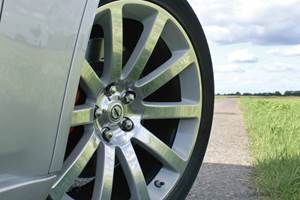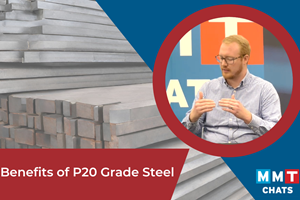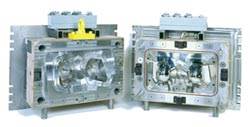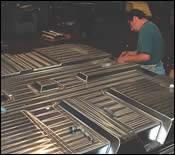Concept Mold & Die: A Bright Idea
This moldmaker empowers its employees and wisely invests in technology to ensure its survival for the long haul.
Like many mold shops’ humble beginnings, Concept Mold & Die, Inc. (Delavan, WI) was started in a garage back in 1992. Today, the 10-person shop specializes in small- to medium-size plastic injection molds (including prototypes) as well as services like wire EDM, CNC machining, plastic parts machining and repair work in a close-knit atmosphere. Industries served include electronics, automobile, medical and consumer products.
Good Thinking
A year after the company was started it incorporated, then moved into a 1,500-square foot facility in Delavan in 1994. In 1996, a second 1,500-square foot unit was added. Finally, in May 2005, Concept Mold moved to its current location in Delavan—nearly doubling its size again.
Concept Mold’s current president, Jim Berna, joined the company as lead mold-maker in 1994. Previously, he worked for a much larger shop and soon proved his worth at Concept Mold. In 1996, he bought out one of the original partners yet remained on the shop floor. Then, in 2000, he took a giant leap out of the shop and into the business when he bought out the remaining partner. He brought his wife on board in late 1996 to do accounting, business administration, and a variety of other duties. She holds the title of vice president.
The couple excitedly entered the world of running a small business. Their mettle was tested the following year when the economy took a turn for the worst. “The biggest problem that we have encountered was the downturn in 2001 to 2003,” Jim recalls. “We had to do many things to make it through and hopefully we are smarter now because of it. We invested more money into the company to keep up with loan payments. Eileen took a part-time job at an attorney’s office performing business administration and accounting duties.”
Sales dropped 16 percent in 2001, and then slowly began to climb again. By 2004 they were back to the 2000 level. “The most important thing we learned during that time was how important relationships are and how important your reputation—your word—actually is,” Jim continues. “This was true in all aspects of our company—from our employees, vendors, customers and the bank. We worked with all of them to make the very best decisions we could at the time. Our employees worked with us and we were able to press forward. We consolidated our vendors—choosing ones that were willing to work with us—to get the most favorable terms and discounts. We then set out to get and retain our customers, pursuing former customers that had slowed relations with us to see why, and ended up getting some of these customers back.
“Our bank’s help was absolutely invaluable as well,” Eileen continues. “When we continued to invest money in the company, the bank had faith in us and they then helped us consolidate our loans and buy equipment when needed. I believe in working closely with the bank and giving them all of the necessary reports and information—sometimes more than they needed! We met several times a year to go over the plan and progress made.”
Eileen adds that they examined every aspect of their budget and trimmed it to the best of their ability—starting with the couple’s own paychecks. They also were very careful ordering job materials, making sure they weren’t ordered too early and then having to pay for them before they needed to. Fortunately, they didn’t have to cut their employees’ pay, and they continued to provide a good health insurance plan. “It was lean in a different sense of the word!” she notes. “There was no fat anywhere. We used the ‘survival of the most determined’ mindset. Most importantly, we always kept a positive attitude and knew we had to make it. We had no other choice. We had to do this.”
Their hard work paid off. In 2005, Concept Mold’s sales and profitability picked up, which Eileen attributes to the company’s expansion and investment in technology. “We bought a Roboform Sinker EDM to replace two of our older manual EDMs,” she comments. “We wish we could have done it sooner. Then, when we moved to the bigger space in the spring of 2005, we were able to purchase several more machines that we never could have fit in our other space. This included our third Haas and a larger water grinder. Then, they were able to put more work through the shop and increase unattended machining time without increasing the number of employees. These two changes helped us increase our sales by 45 percent 2005. To date, in 2006 we are not only maintaining that level of sales but increasing it by about 8 percent.”
The Thought Process
Hurdles today include deciding the best ways to invest to allow the shop to continue to make a profit. “With the limited resources of a small mold shop, we need to decide where to invest our dollars,” Jim notes. “The balance between people and machines is tough. Where do you spend your money? Do you stay small and buy more and more unattended machines and have fewer employees that are well compensated? At what point do you hire more people and still control the growth? What do we want to be when we grow up? This wasn’t a problem when things were slow, but now that we are busier we need to make these decisions so that we can continue to provide the same level of service to our customers as well as continue to seek new customers.”
A second challenge is one the industry faces as a whole: finding skilled labor. Jim
feels this problem is going to get worse before it gets better. “Where do we find these highly skilled people?” he questions. “It is very hard. We rely on word of mouth and have had some luck with local news-paper ads. We have hired an additional mold-
maker, but our strategy is more machines, less people. The last thing we want to do is get busy, hire people, get slower and lay people off. We intend to keep everyone we hire long-term and don’t want employees worrying about these matters.”
However, keeping their current em-ployees happy comes quite easily to the couple. “Employee empowerment is very important to us,” Jim explains. “We use a cooperative group effort that encourages independence and personal responsibility, while still working as a collective group to achieve our common goals. These goals include continuous improvement in all aspects of the company. We want to keep doing what we are doing—only better, and solidify a plan for the future.”
Part of this plan includes investing in the latest software and machines. “Keeping up with technology is the key to succeeding in this business,” Eileen affirms. “We need to achieve a level of proficiency so that we can start working on the business and not in the business. With a few changes, like having Jim spend less time in the shop and focus more on sales and quoting, we will have more time to set aside for developing and refining our sales and business strategies.”
While that happens, the couple notes they will maintain the company’s family-like atmosphere, with a simple formula for success. “We will continue to do the best that we can to keep up with technology, provide a modern, comfortable environment and
still remain profitable.” What a Concept!
Related Content
Industry Report: Automotive Outlook, Forecast, Disruptions and Industry Transitions
A recent presentation by Auto Forecast Solutions shares some interesting trends to help those who work within the automotive industry better understand key trends.
Read MoreU.S. Economy Indicates Prospects for Moldmakers
An examination of the U.S. economy suggests its resilience against a recession, yet a mixed outlook for moldmaking and plastics persists.
Read MoreWhat Electric Vehicles Mean to Mold Builders
Harbour Results CEO Laurie Harbour on why EVs make the situation at mold and tool shops more challenging.
Read MoreProject Reveals Added Benefits of New P20 Grade Steel in Machinability, Cycle Time and No Stress Relief
MoldMaking Technology's Christina Fuges talks with General Motors' Shane Appel about a project testing a new P20 steel grade's dimensional stability.
Read MoreRead Next
Chicago Mold Engineering: “Head”ing Into the Future
With continued focus on its automotive headlamp reflector molds niche, CME relies on technology and equipment advancements to “drive” success.
Read MoreChicago Mold Engineering: In The Spotlight
Focusing on a niche in the automotive headlap reflector market—coupled with the most advanced technologies and mold manufacturing techniques—lights the way for this moldmaker’s 2007 Leadtime Leader Award: Large Shop.
Read MoreReasons to Use Fiber Lasers for Mold Cleaning
Fiber lasers offer a simplicity, speed, control and portability, minimizing mold cleaning risks.
Read More

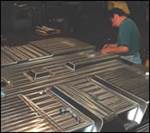






.jpg;maxWidth=300;quality=90)







